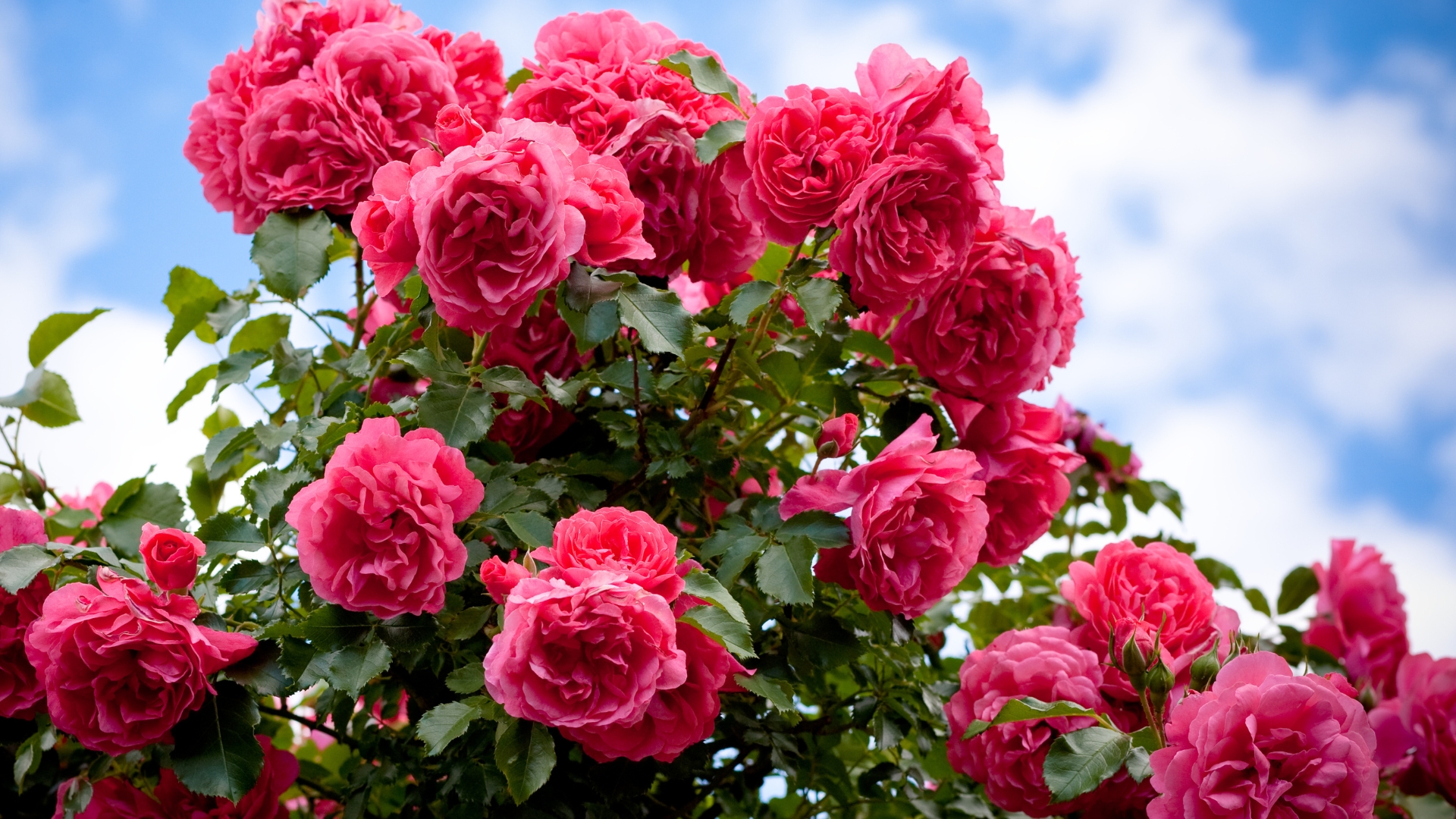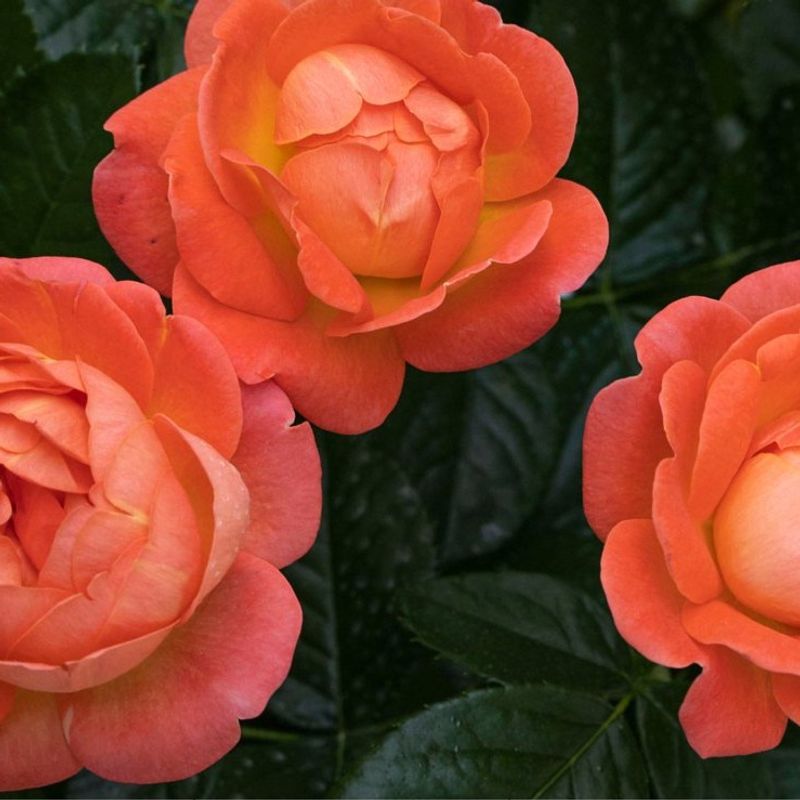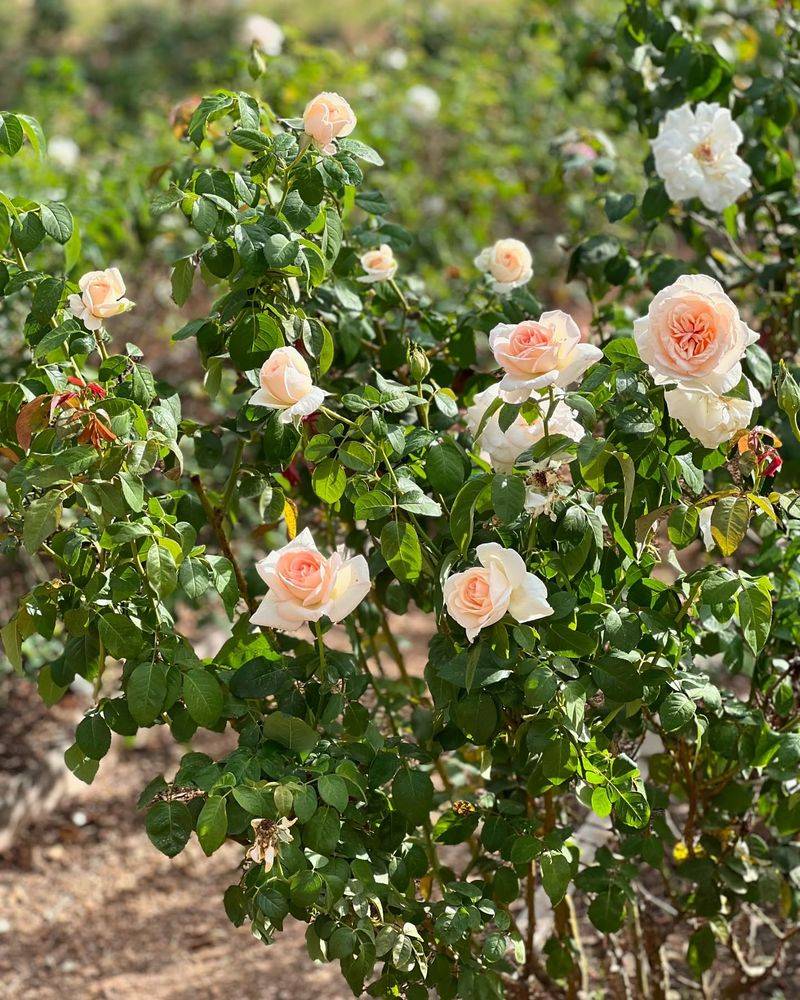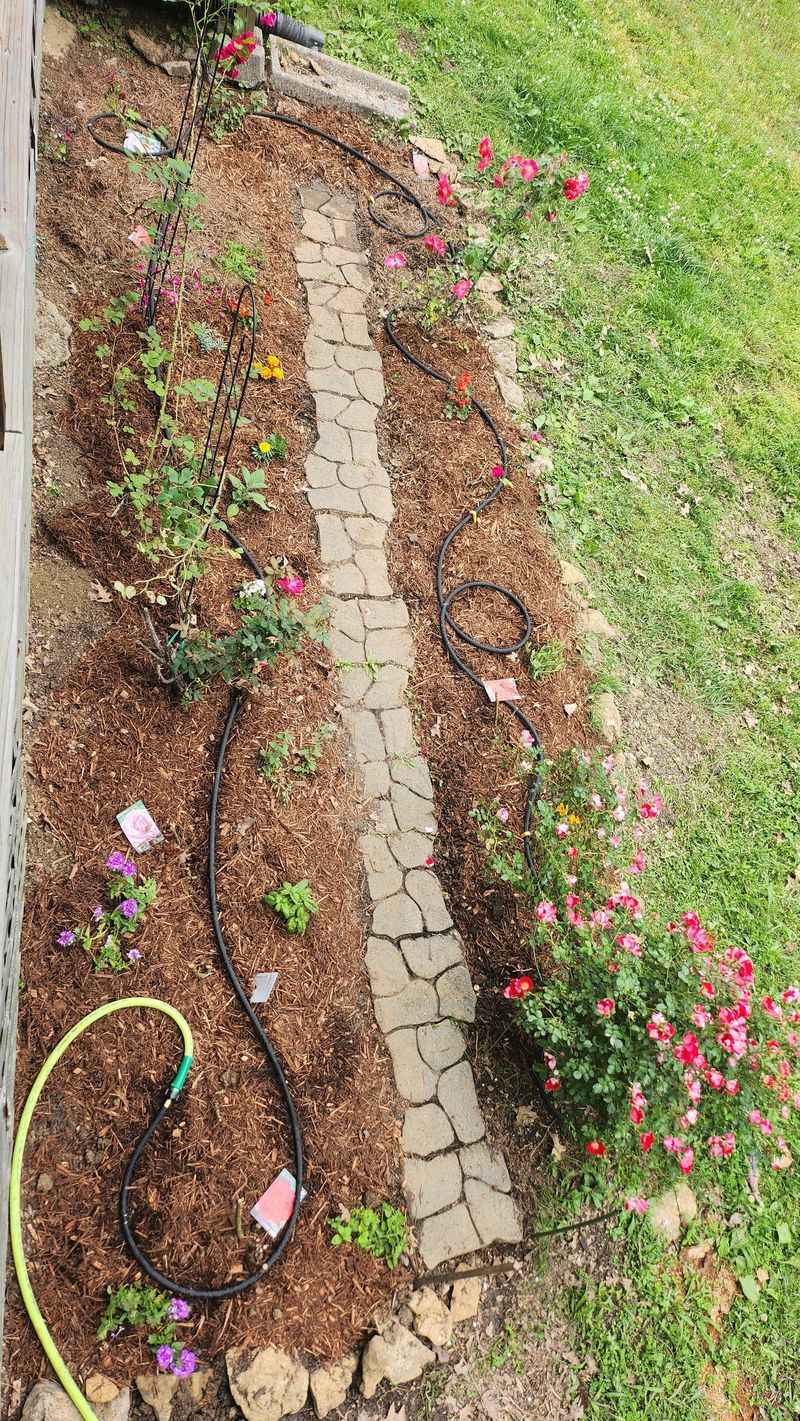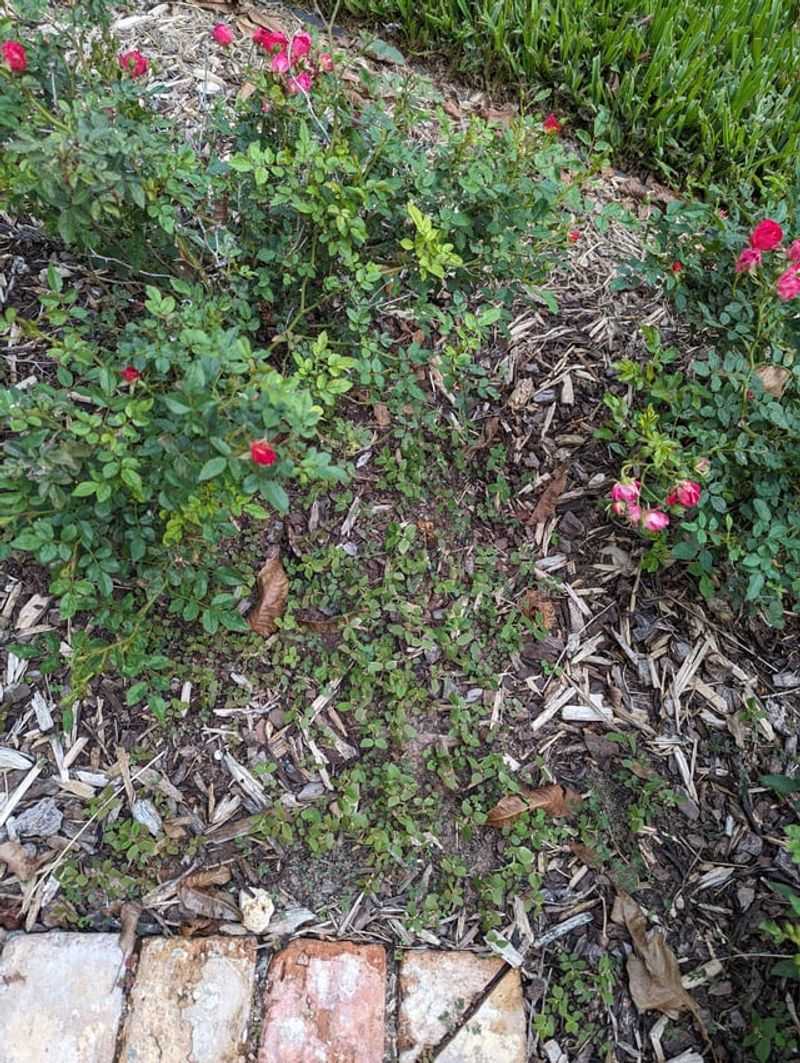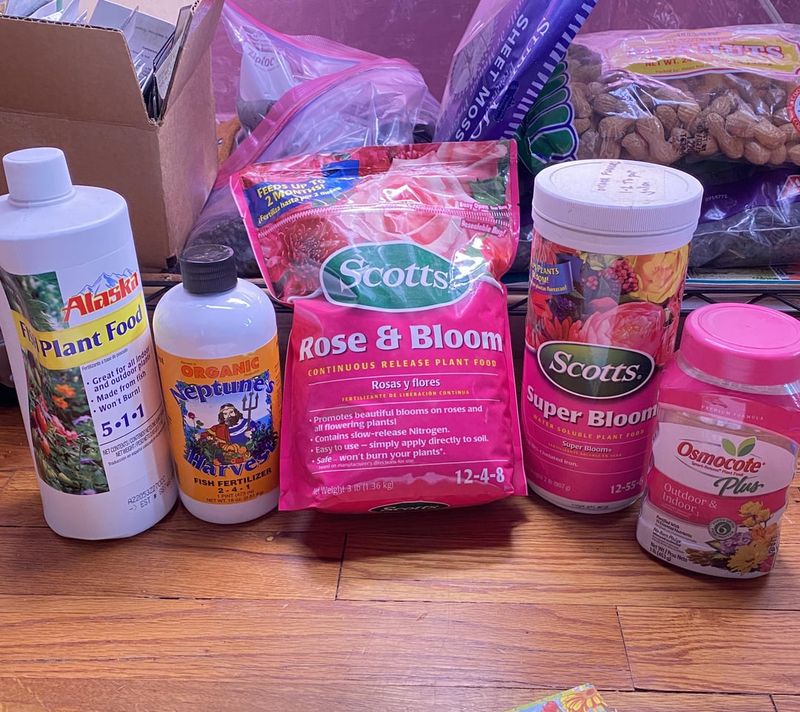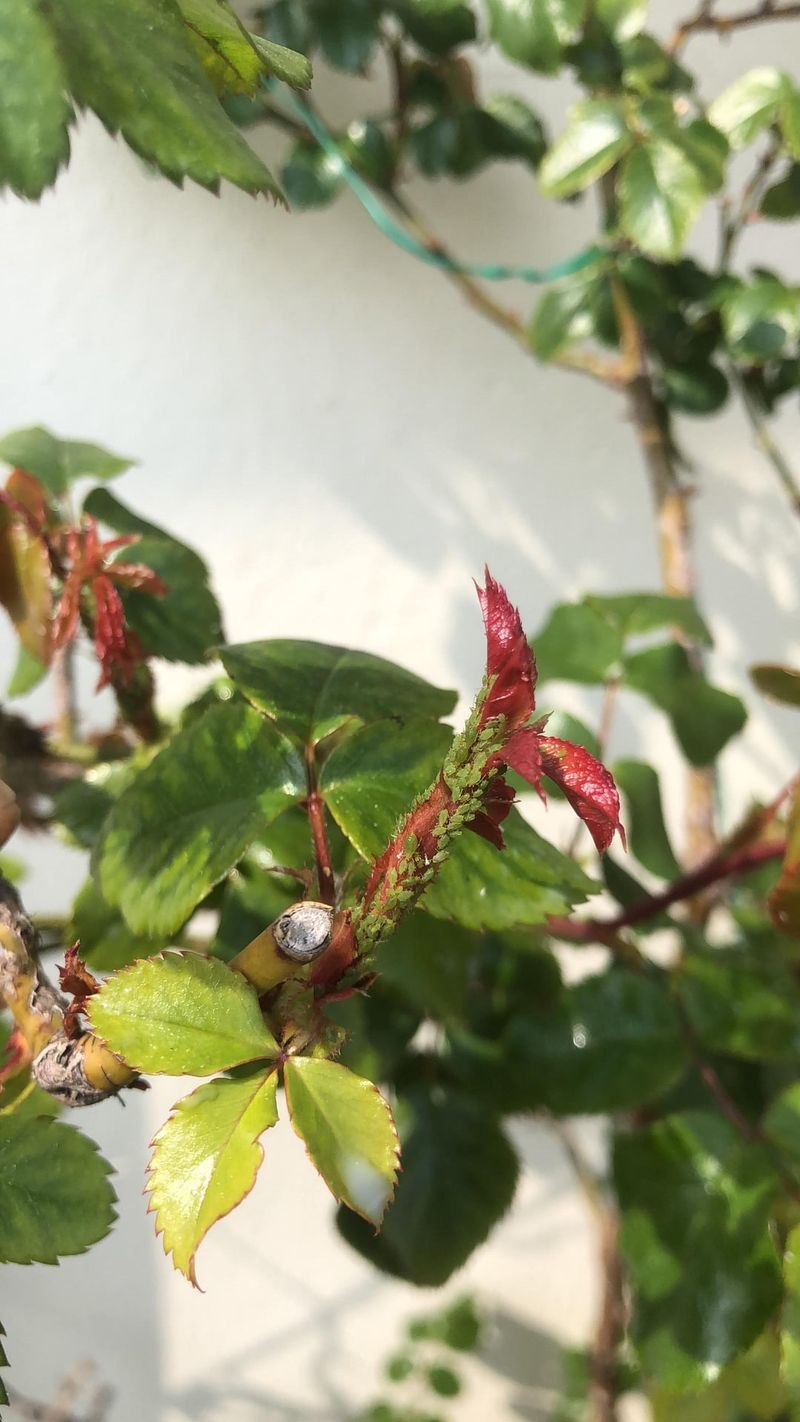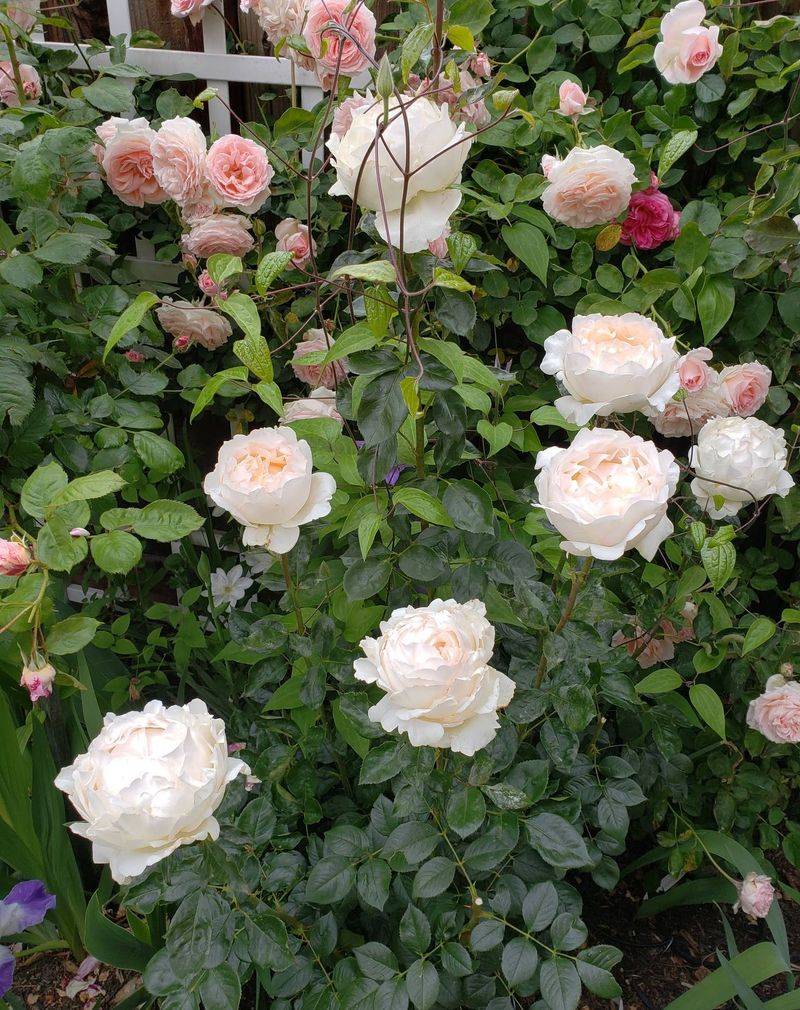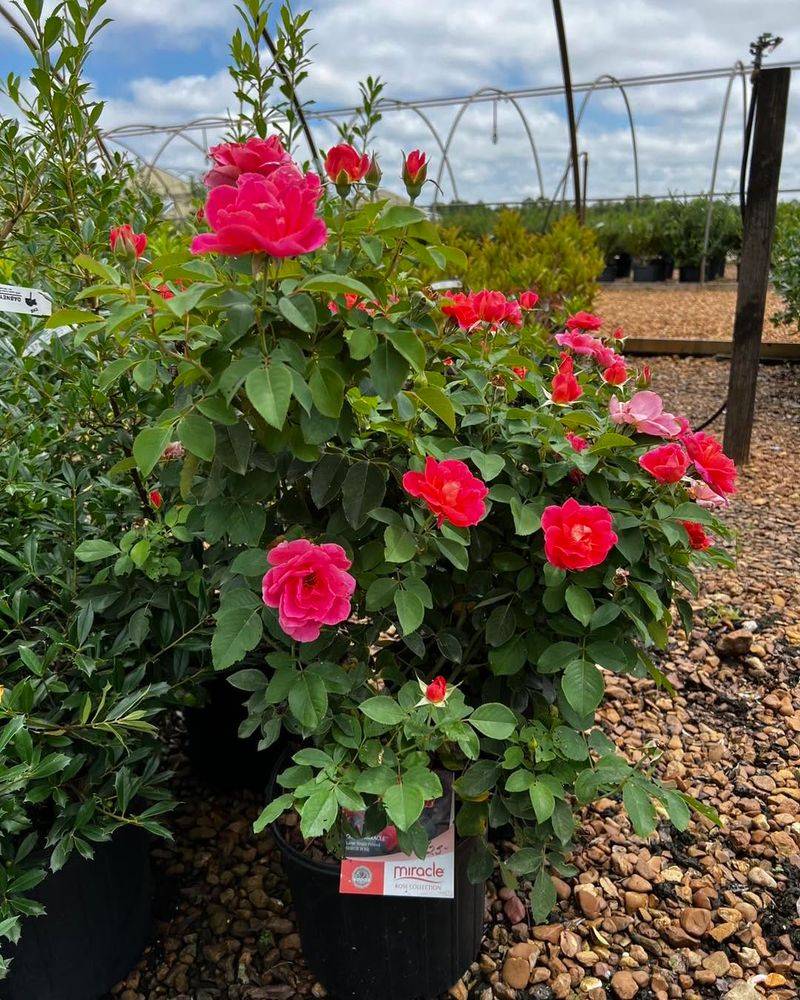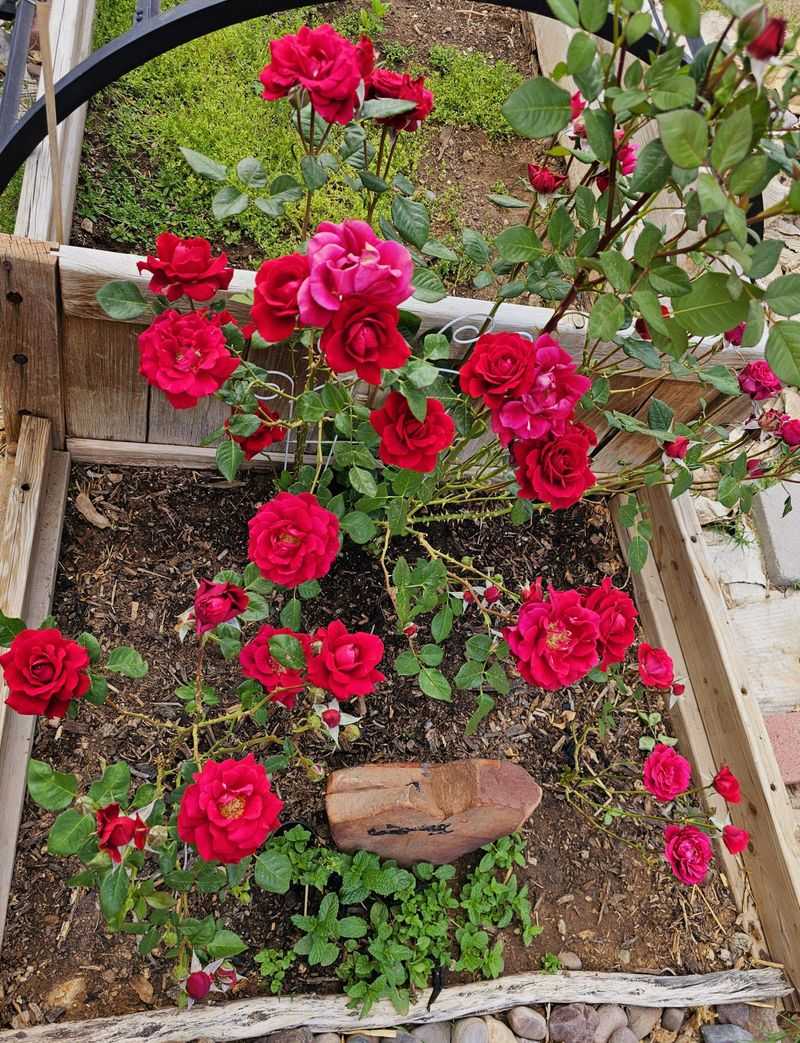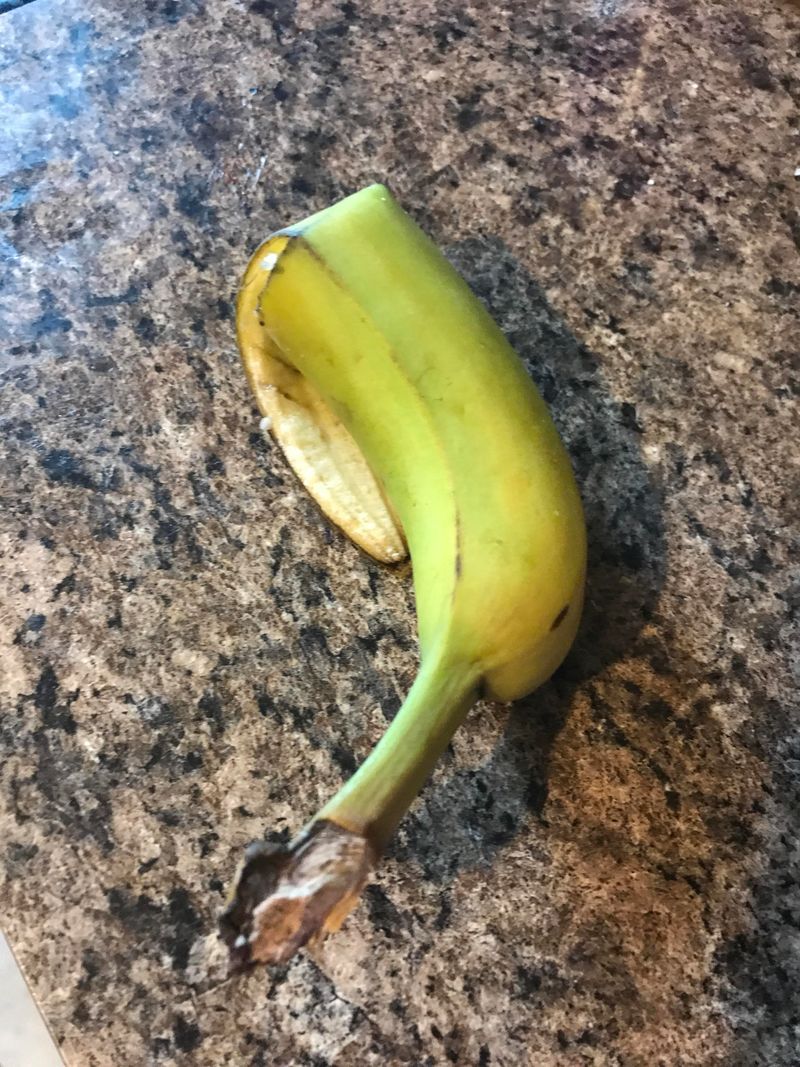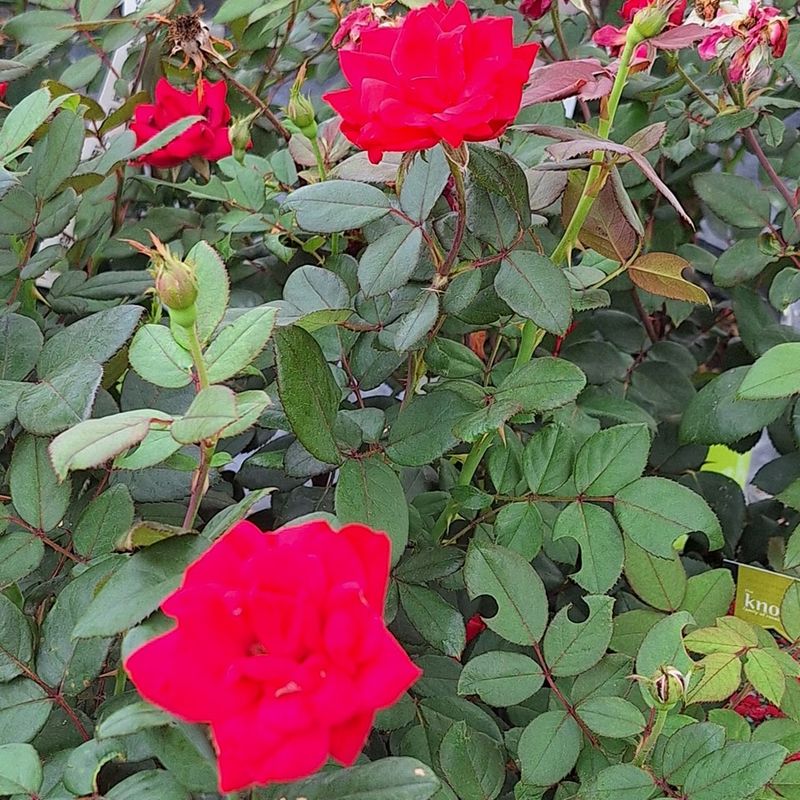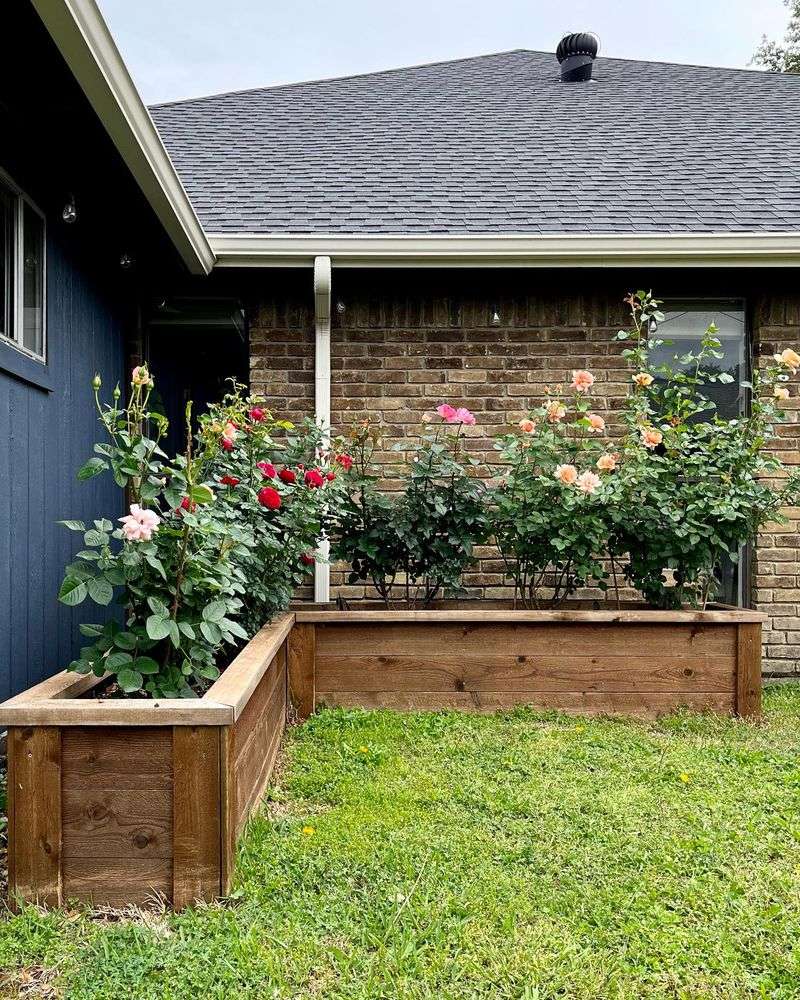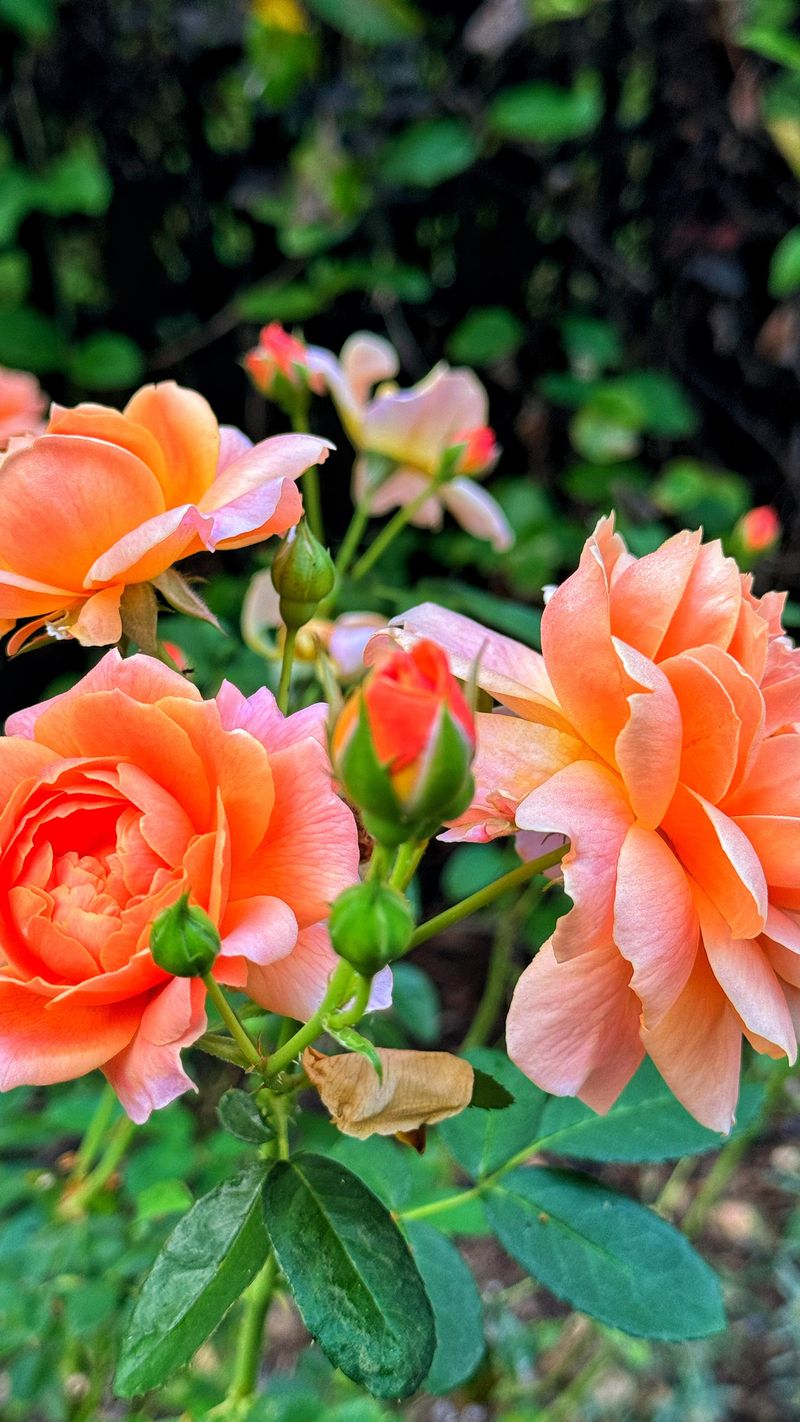Growing roses doesn’t have to be a full-time job—I’ve learned that the hard way. With the right techniques, you can get jaw-dropping blooms without spending all weekend fussing over them.
These 15 tips have saved me time, energy, and a whole lot of guesswork. Some are so simple, I wish I had known them years ago.
If you’re ready for roses that actually thrive without the drama, let’s get into it.
1. Choose Self-Cleaning Rose Varieties
Knock Out and Drift roses drop their spent blooms automatically, saving you endless hours of deadheading. They keep flowering from spring until frost without your constant attention.
Many modern shrub roses have this self-cleaning trait too. Look for roses labeled as ‘low-maintenance’ or ‘disease-resistant’ at garden centers, as these typically require the least fuss while delivering months of color.
2. Plant Roses in Morning Sun Spots
Morning sunshine dries dew quickly, preventing common fungal diseases that plague rose bushes. Find a spot that gets 6-8 hours of sun starting early in the day, but offers some afternoon shade in hotter climates.
The perfect location makes all the difference in rose care. Roses bathed in morning light develop stronger stems, produce more flowers, and naturally resist problems that would otherwise require your intervention with sprays and treatments.
3. Install Drip Irrigation Systems
Water delivered directly to the soil keeps foliage dry and prevents black spot and powdery mildew. Set your system on a timer for early morning watering to further reduce disease risk.
Drip systems conserve water while giving roses exactly what they need. The steady moisture supports consistent growth and blooming, eliminating the feast-or-famine cycle that stresses plants and creates more work for you in the long run.
4. Apply Deep Layer Mulch
Three inches of organic mulch suppresses weeds, retains moisture, and gradually feeds your roses as it breaks down. Cedar chips, pine straw, or shredded bark work wonderfully around rose bases.
Keep mulch pulled slightly away from the stems to prevent rot. The mulch barrier dramatically reduces your watering frequency during summer heat while eliminating hours of tedious weeding that would otherwise steal your weekends.
5. Feed With Slow-Release Fertilizers
Granular rose fertilizers with time-release formulas feed plants for months with just one application. Look for products specifically designed for roses that include micronutrients like magnesium and iron.
Sprinkle around the drip line in early spring, then again in mid-summer. This simple twice-a-year feeding schedule replaces weekly liquid fertilizing routines while providing steady nutrition that prevents the feast-and-famine stress that can make roses more susceptible to pests.
6. Spray Neem Oil Preventatively
Natural neem oil creates an invisible barrier against common rose pests and fungal problems. Unlike harsh chemicals, it’s safe for beneficial insects when applied correctly in the evening hours.
A monthly preventative spray often eliminates the need for emergency treatments later. Mix with a drop of dish soap to help it stick to leaves, and you’ll head off aphids, thrips, and black spot before they gain a foothold and create extra work.
7. Group Roses By Water Needs
Plant roses with similar moisture requirements together to avoid both overwatering and underwatering. Once-established, rugosa and species roses need far less water than hybrid teas and floribundas.
This smart planning strategy makes maintenance more efficient. You’ll save water, prevent diseases caused by improper irrigation, and spend less time adjusting sprinklers or dragging hoses around to accommodate different varieties’ needs.
8. Prune Once Annually
Major pruning just once a year in late winter simplifies rose care dramatically. Remove dead or crossing branches and open up the center for airflow, cutting back to outward-facing buds.
Many gardeners over-prune throughout the season, creating extra work. This single annual prune, plus minimal cleanup of dead canes as needed, gives roses their best form while saving you hours of unnecessary cutting and fussing throughout the growing season.
9. Plant Companion Flowers
Alliums, salvias, and catmint planted among roses naturally deter pests while adding beauty. These companions attract beneficial insects that hunt aphids and other rose-munching bugs.
The diversity creates a mini-ecosystem that works in your favor. As a bonus, these companion plants fill in bare spots between roses, suppressing weeds and creating a fuller garden display without the constant maintenance of bare soil.
10. Use Banana Peels As Fertilizer
Banana peels provide potassium that roses crave for stronger stems and more abundant blooms. Simply bury chopped peels a few inches deep around the drip line of your bushes.
This kitchen scrap recycling eliminates the need for some commercial fertilizers. The peels decompose slowly, releasing nutrients gradually and feeding beneficial soil microbes that further support rose health without any extra effort from you.
11. Select Disease-Resistant Varieties
Earth-Kind and AARS winner roses undergo rigorous testing to prove their natural resistance to common problems. Varieties like ‘Carefree Beauty’ and ‘William Baffin’ thrive with minimal intervention.
These tough roses don’t need weekly fungicide treatments like more delicate varieties. By starting with naturally resilient plants, you eliminate most of the maintenance headaches that make rose growing seem difficult, while still enjoying stunning blooms.
12. Create Permanent Edging
Installing permanent edging around rose beds saves endless hours of bed maintenance. Steel, stone, or heavy-duty plastic barriers prevent grass from encroaching into your rose garden.
The clean separation between lawn and roses eliminates the need for string trimming near thorny branches. With good edging, maintaining the border between roses and lawn becomes an occasional rather than weekly chore, saving time and preventing accidental damage to plants.
13. Apply Compost Tea Monthly
Homemade compost tea strengthens roses’ immune systems naturally. This liquid gold introduces beneficial microbes that help roses fend off diseases and extract nutrients more efficiently from soil.
Steep finished compost in water for 24-48 hours, then strain and spray directly on leaves and soil. This simple monthly application often eliminates the need for synthetic fungicides and fertilizers while boosting plant vigor with minimal effort.
14. Grow Roses In Raised Beds
Elevated growing spaces with perfect soil create ideal conditions for easy-care roses. The improved drainage prevents root rot issues, while the height makes maintenance easier on your back and knees.
Raised beds warm up earlier in spring, extending your bloom season. The controlled environment of a raised bed also means fewer weeds and better soil quality, which translates to healthier plants that need less intervention from you.
15. Apply Spring Epsom Salt Boost
A spring application of Epsom salts provides magnesium that intensifies flower colors and strengthens stems. One tablespoon per bush, sprinkled around the base before a good rain, does the trick.
This simple addition enhances chlorophyll production for greener foliage. While not a complete fertilizer, this easy spring boost complements your regular feeding routine and helps roses recover from winter stress more quickly, setting them up for a spectacular season.

